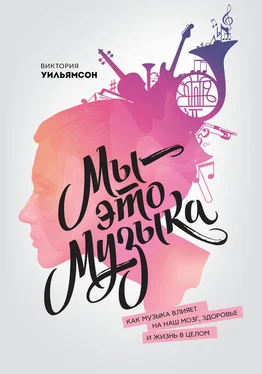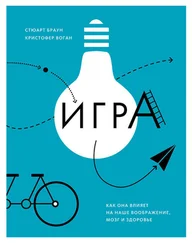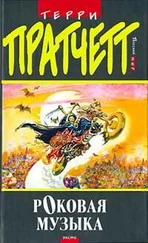Yildiz, A., and Arikan, D. (2012), ‘The effects of giving pacifiers to premature infants and making them listen to lullabies on their transition period for total oral feeding and sucking success’, Journal of Clinical Nursing , 21 (5–6), 644–656.
Allen, R., and Heaton, P.F. (2010), ‘Autism, music, and the therapeutic potential of music in alexithymia’, Music Perception , 27 (4), 251–261. Heaton, P.F. (2009), ‘Assessing musical skills in autistic children who are not savants’, Philosophical Transactions of the Royal Society B: Biological Sciences , 364 (1522), 1443–1447.
Hess, K.L, Morrier, M.J., Heflin, L.J., and Ivey, M.L. (2008), ‘Autism treatment survey: services received by children with autism spectrum disorders in public school classrooms’, Journal of Autism and Developmental Disorders , 38 (5), 961–971.
Kim, J., Wigram, T, and Gold, C. (2008), ‘The effects of improvisational music therapy on joint attention behaviors in autistic children: a randomized controlled study’, Journal of Autism and Developmental Disorders, 38 (9), 1758–1766.
Lim, H.A. (2010), ‘Effect of “developmental speech and language training through music” on speech production in children with autism spectrum disorders’, Journal of Music Therapy , 47 (1), 2–26.
Wan, C.Y., et al. (2011), ‘Auditory-Motor Mapping Training as an Intervention to Facilitate Speech Output in Non-Verbal Children with Autism: A Proof of Concept Study’, PLOS ONE, 6 (9) , e25505.
Phillips-Silver, J. (2009), ‘On the meaning of movement in music, development and the brain’, Contemporary Music Review, 28 (3), 293–314.
Srinivasan, S.M., and Bhat, A.N. (2013), ‘A review of “music and movement” therapies for children with autism: embodied interventions for multisystem development’, Frontiers in Integrative Neuroscience , 7, 22.
Jackson, N.A. (2003), ‘A survey of music therapy methods and their role in the treatment of early elementary school children with ADHD’, Journal of Music Therapy , 40 (4), 302–323.
Pelham, W.E. Jr, et al. (2011), ‘Music and Video as Distractors for Boys with ADHD in the Classroom: Comparison with Controls, Individual Differences, and Medication Effect’, Journal of Abnormal Child Psychology , 39 (8), 1085–1098.
Fan Zhang et al. (2012), ‘Music therapy for attention deficit hyperactivity disorder (ADHD) in children and adolescents (Protocol)’, Cochrane Database of Systematic Reviews 2012, Issue 8. Art. No.: CD010032. DOI: 10.1002/14651858.CD010032.
http://www.nhs.uk/Conditions/Dyslexia/Pages/Introduction.aspx.
Patel, A.D. (2012), ‘Language, music, and the brain: A resource-sharing framework’, in P. Rebuschat, M. Rohrmeier, J. Hawkins, and I. Cross (eds.), Language and Music as Cognitive Systems (pp. 204–223). Oxford: Oxford University Press. Patel, A.D. (2008), Music, Language, and the Brain. New York: Oxford University Press.
Hornickel, J., and Kraus, N. (2013), ‘Unstable Representation of Sound: A Biological Marker of Dyslexia’, The Journal of Neuroscience , 33 (8), 3500–3504.
Butzlaff, R. (2000), ‘Can music be used to teach reading?’, Journal of Aesthetic Education , 34 (3/4), 167–178.
Forgeard, M., et al. (2008), ‘The relation between music and phonological processing in normal-reading children and children with dyslexia’, Music Perception , 25 (4), 383–390.
Overy, K., Nicolson, R.I., Fawcett, A.J., and Clarke, E.F. (2003), ‘Dyslexia and music: Measuring musical timing skills’, Dyslexia , 9 (1), 18–36.
Tallal, P., Miller, S., and Fitch, R.H. (1993), ‘Neurological basis of speech: A case of the pre-eminence of temporal processing’, Annals of the New York Academy of Science , 682, 27–47.
Overy, K. (2000), ‘Dyslexia, Temporal Processing and Music; The potential of music as an early learning aid for dyslexic children’, Psychology of Music , 28 (2), 218–229.
Slater, J., Tierney A., and Kraus, N. (2013), ‘At-risk elementary school children with one year of classroom music instruction are better at keeping a beat’. PLOS ONE. 8 (10): e77250.
Cogo-Moreira, H., et al. (2012), ‘Music education for improving reading skills in children and adolescents with dyslexia’, Cochrane Database of Systematic Reviews Issue 8. Art. No.: CD009133. DOI: 10.1002/14651858. CD009133.pub2.
http://www.prismlab.org/research_page/research.
http://www.cochrane.org/cochrane-reviews.
Mansky, P.J., and Wallerstedt, D.B. (2006), ‘Complementary medicine in palliative care and cancer management’, Cancer Journal , 12 (5), 425–431.
Aldridge, D., Gustorff, G., and Hannich, H.-J. (1990), ‘“Where am I?” Music therapy applied to coma patients’, Journal of the Royal Society of Medicine , 83 (6), 345–346.
Aldridge, D. (1996), Music therapy research and practice in medicine . London: Jessica Kingsley.
Bradt, J., Dileo, C, and Grocke, D. (2010), ‘Music interventions for mechanically ventilated patients’, Cochrane Database of Systematic Reviews 2010, Issue 12. Art. No.: CD006902. DOI: 10.1002/14651858.CD006902.pub2.
Mackay, J., and Mensah, G.A. (2004). The atlas of heart disease and stroke. Geneva: World Health Organization.
Särkämö, T., et al. (2008), ‘Music listening enhances cognitive recovery and mood after middle cerebral artery stroke’, Brain , 131 (3), 866–876.
Tsai, P.L., et al. (2013), ‘Listening to classical music ameliorates unilateral neglect after stroke’, American Journal of Occupational Therapy , 67 (3), 328–35.
Bodak, R. (2012), ‘Using music to increase spatial awareness in two right hemisphere stroke patients with chronic unilateral neglect’. Unpublished PhD thesis, Goldsmiths, University of London.
Thaut, M.H., et al. (1996), ‘Rhythmic auditory stimulation in gait training for Parkinson’s disease patients’, Movement Disorders , 11 (2), 193–200.
Nombela, C., Hughes, L.E., Owen, A.M., and Grahn, J.A. (2013), ‘Into the groove: can rhythm influence Parkinson’s disease?’, Neuroscience and Biobehavioural Reviews , Sep 3. pii: S0149–7634 (13)00193–0.
Bradt, J., et al. (2010), ‘Music therapy for acquired brain injury’, Cochrane Database of Systematic Reviews 2010, Issue 7. Art. No.: CD006787. DOI: 10.1002/14651858.CD006787.pub2.
Muto, T., et al. (2007), ‘Interactive cueing with walk-Mate for Hemiparetic Stroke Rehabilitation’, Journal of NeuroEngineering and Rehabilitation , 9, 58.
Читать дальше
Конец ознакомительного отрывка
Купить книгу


![Виктория Токарева - Тихая музыка за стеной [сборник]](/books/34306/viktoriya-tokareva-tihaya-muzyka-za-stenoj-sbornik-thumb.webp)



![Аре Бреан - Музыка и мозг [Как музыка влияет на эмоции, здоровье и интеллект]](/books/398841/are-brean-muzyka-i-mozg-kak-muzyka-vliyaet-na-emoc-thumb.webp)





